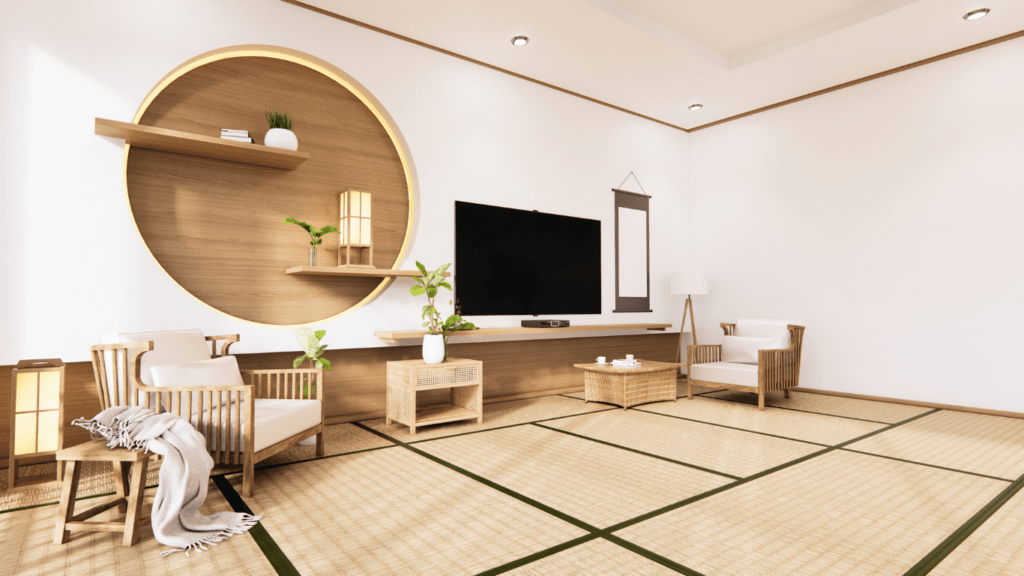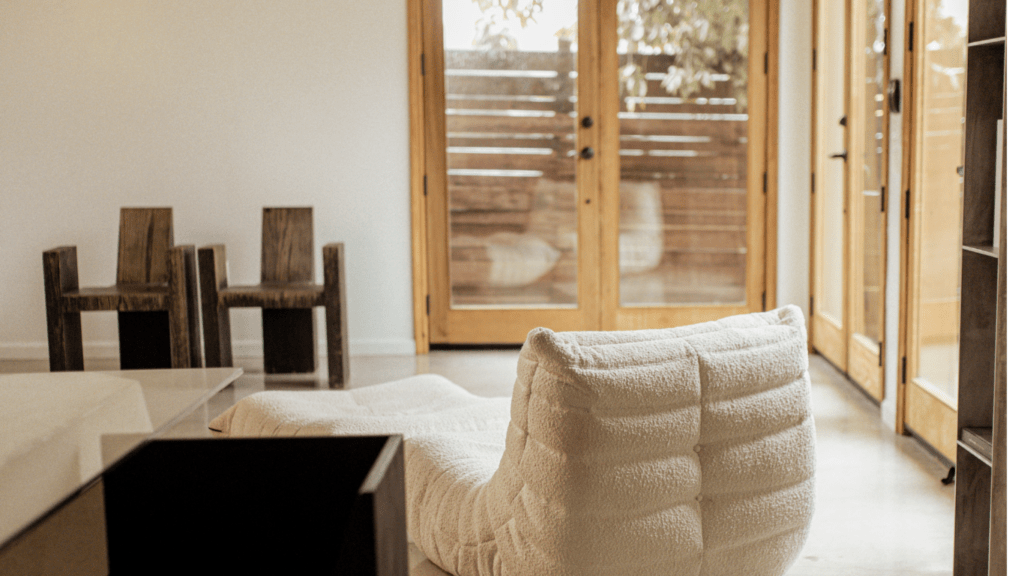The Origins of Minimalist Design
Early Influences and Pioneers
Minimalist design began in the early 20th century, inspired by movements like:
- De Stijl
- Bauhaus
De Stijl, founded in 1917 in the
Netherlands, emphasized abstraction and reduction to basic forms and colors. Key figures include Piet Mondrian and Theo van Doesburg, who promoted simplicity and functionality.
The Bauhaus movement, starting in 1919 in Germany, further advanced minimalist principles.
Walter Gropius and Ludwig Mies van der Rohe, legendary figures in Bauhaus, advocated for designs integrating functionality and elegance.
Gropius emphasized using minimal decor while maximizing purpose, and Mies van der Rohe famously coined the phrase, “Less is more,” encapsulating the essence of minimalist design.
Cultural and Historical Context
Minimalist design emerged partly in response to the excesses of the previous epochs.
After World War I and II, many societies sought simplicity and order, reflecting their desire for stability and clarity.
The 1960s saw the rise of minimalism in visual arts as a counter-movement to the complexity and chaos of abstract expressionism.
Eastern philosophies, especially Zen Buddhism, also influenced minimalist aesthetics. Zen principles stress harmony and balance, which are key elements of minimalist design.
Traditional Japanese design, with its focus on simplicity, natural elements, and the value of empty space, contributed greatly to the minimalist ethos.
Minimalism’s emphasis on “less is more” now permeates various domains, from architecture to web design, rooted in these early influences and cultural shifts.
Key Principles of Minimalist Design
Emphasizing Functionality
Functionality remains central in minimalist design. Every element must serve a purpose, eliminating unnecessary adornments.
This principle reduces distractions and enhances usability. In architecture, for example, open floor plans and multi-functional spaces reflect this ethos.
In web design, minimalist interfaces improve user experience with intuitive navigation and uncluttered layouts.
Use of Monochromatic Color Schemes
Monochromatic color schemes define minimalist design. Using different shades of a single color creates visual cohesion without overwhelming the viewer.
This palette enhances the aesthetic by maintaining simplicity and focus. In interior design, common examples include varying tones of white, gray, and black to create a serene environment.
In graphic design, a single color with different shades ensures brand consistency and visual clarity.
Minimalism in Different Mediums

Architecture and Interior Design
Minimalism has revolutionized architecture and interior design. In architecture, the use of clean lines with uncluttered spaces focuses on structural elements to create aesthetically pleasing environments.
Prominent architects like Ludwig Mies van der Rohe embraced the “less is more” philosophy, using open floor plans and industrial materials.
Interior design follows similar principles, prioritizing functionality and simplicity.
Spaces feature neutral color palettes and natural light. Furniture and decor serve specific purposes without excessive ornamentation.
For instance, Scandinavian design often employs minimalist principles, with its focus on simplicity and coziness through the concept of “hygge.”
Graphic and Web Design
Graphic and web design have also seen a shift towards minimalism.
Designers utilize white space and simplistic typography to enhance readability and user experience. This approach reduces visual clutter.
Flat design, characterized by the use of simple shapes and colors, has become popular in web design.
Companies like:
- Apple
have adopted this style for their user interfaces, ensuring that elements are intuitive and aesthetically appealing.
In graphic design, minimalism emphasizes the core message, using fewer elements to deliver a clear and impactful visual statement.
Fashion and Product Design
Minimalism in fashion and product design emphasizes quality over quantity.
Fashion designers like Jil Sander and Calvin Klein are known for their minimalist collections, which feature streamlined silhouettes and monochromatic color schemes.
This approach focuses on timelessness and versatility rather than trendy, often transient styles.
Product design incorporates minimalism through functionality and ease of use.
Brands like:
- Muji
- Apple
create products with clean lines and intuitive designs.
These products prioritize usability and efficiency, eliminating unnecessary features to enhance user satisfaction.
Minimalist product design often leads to sustainable practices, emphasizing long-lasting and well-crafted items.
The Impact of Minimalism on Modern Art and Culture
Reduction in Consumerism
Minimalism promotes intentional living, steering individuals away from excessive consumerism.
Instead of accumulating material possessions, people prioritize meaningful experiences and functional items.
The rise of capsule wardrobes exemplifies this trend, where a curated collection of versatile and high-quality clothing replaces an overflowing closet.
Research from the Journal of Consumer Research indicates that reducing clutter enhances emotional well-being, reinforcing minimalist principles.
This shift towards minimalism counters the culture of overconsumption, leading to more sustainable and mindful living.
Influence on Lifestyle and Productivity
Minimalism streamlines daily routines, enhancing productivity and focus. By removing distractions, individuals can dedicate more energy to essential tasks.
For example, minimalist workspaces often feature clean desks, limited decor, and organized storage, fostering a conducive environment for efficient work.
Studies from the Princeton University Neuroscience Institute have shown that cluttered environments hinder task performance, while a clutter-free space can enhance attention and efficiency.
Adopting minimalist principles in daily life leads to improved mental clarity and purposeful living.
Major Figures and Works in Minimalist Design
Architects and Designers
Minimalist design owes much to its pioneering architects and designers.
Ludwig Mies van der Rohe introduced the concept of “less is more” in architecture, focusing on open spaces and simple forms.
His works like the Barcelona Pavilion exhibit clean lines and functional elegance.
- Tadao Ando, a self-taught architect, employs concrete and natural elements to create serene spaces, as seen in the Church of the Light.
- John Pawson, renowned for his philosophy of simplicity, creates spaces that emphasize light and proportion.
His projects, including the Calvin Klein flagship store, embody the essence of minimalist aesthetics.
Minimalism’s influence extends beyond structures and interiors, shaping how we perceive space and form in everyday environments.
Iconic Minimalist Artworks
- Minimalist art places emphasis on simplicity and the essence of the subject.
- Donald Judd’s sculptures, like his “Untitled” series, utilize industrial materials and repeated geometric forms to showcase minimalism.
- Frank Stella’s “Black Paintings” illustrate the power of reduction, using only black paint and basic shapes.
- Agnes Martin’s “Untitled #1” features grid patterns and muted colors, evoking a sense of calm and harmony.
- Dan Flavin’s work with fluorescent light tubes, such as “The Diagonal of May 25, 1963,” transforms everyday objects into minimalist masterpieces.
These artworks challenge viewers to find meaning in simplicity, reinforcing the core principle of “less is more.
Through these figures and their works, minimalist design continues to shape contemporary aesthetics, emphasizing the beauty of simplicity and functional elegance.

